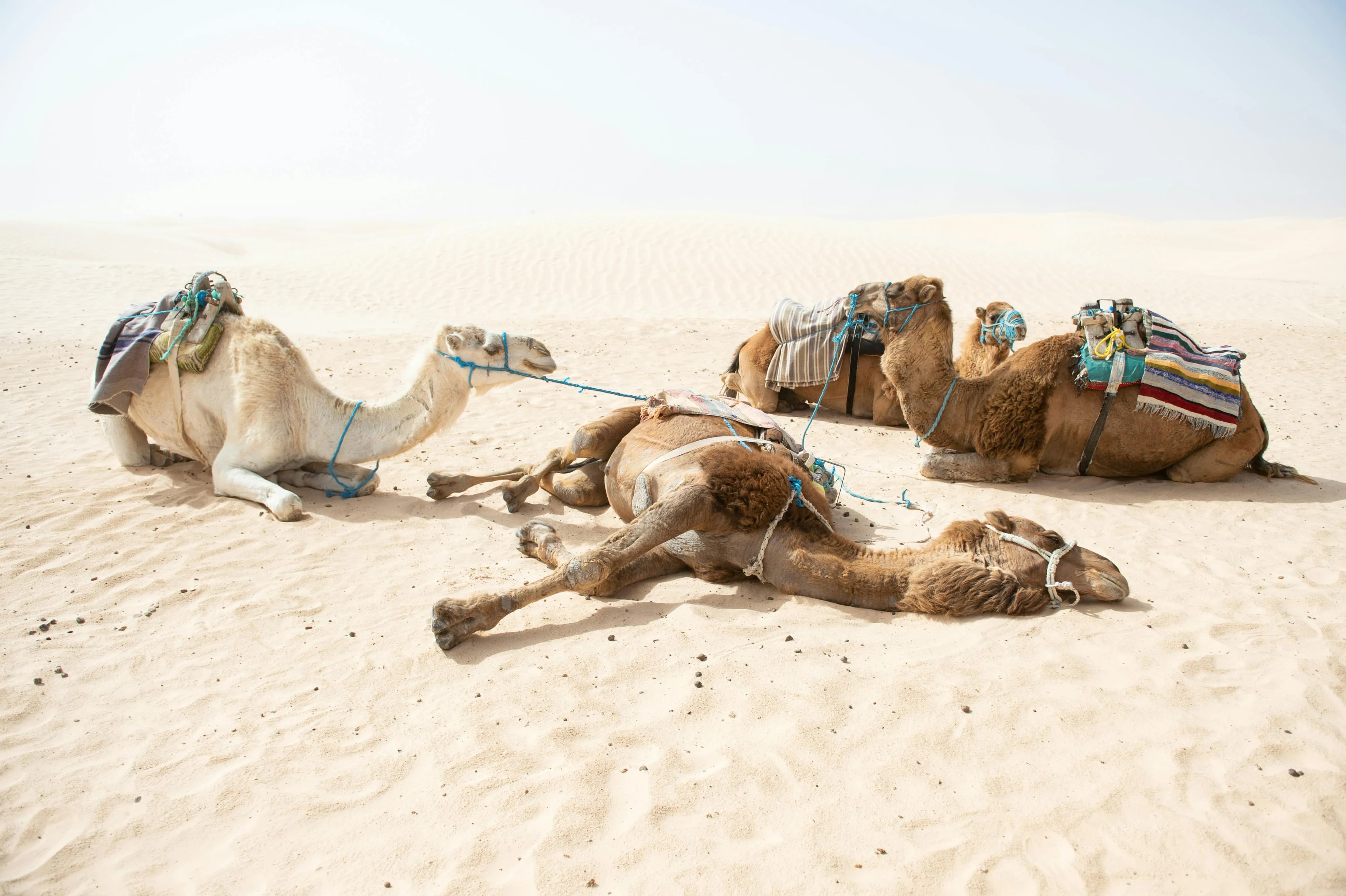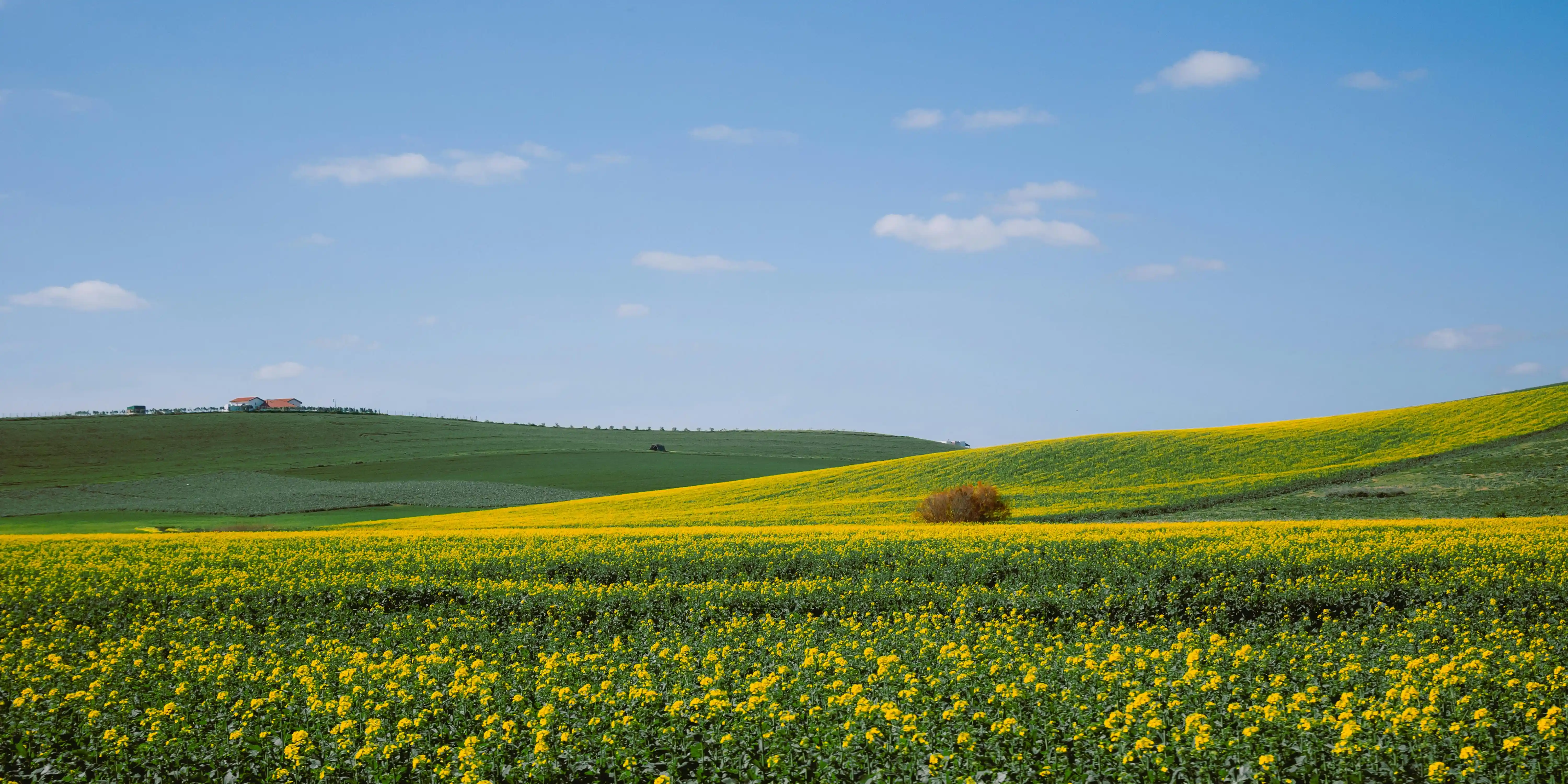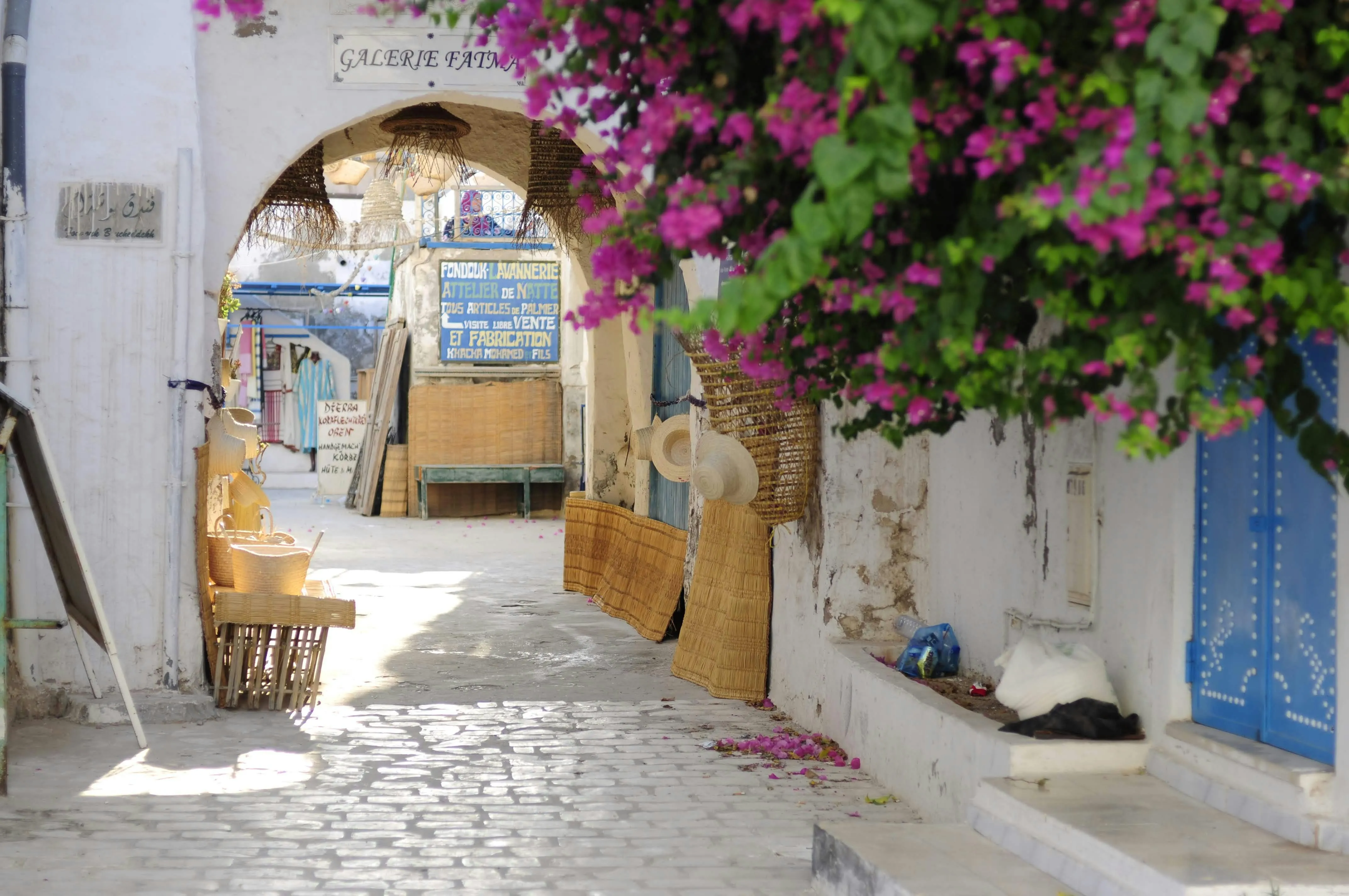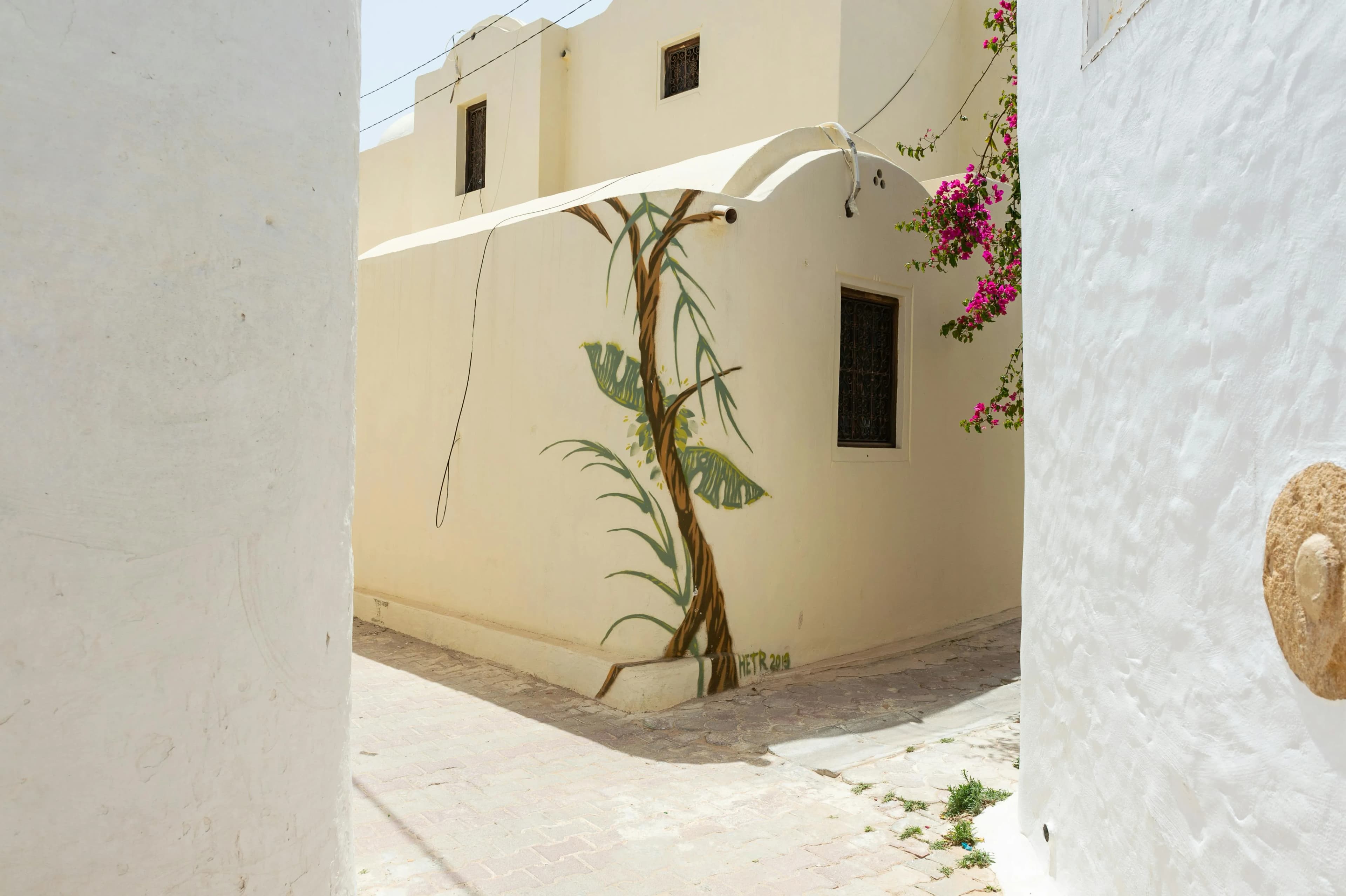
Tunisia’s Sahara region is a land of contrasts. Beyond the Mediterranean coast lie golden sand dunes, vast salt pans, and hidden oases (Sahara overview). Here travelers swap beaches for camel caravans and sunsets behind palm groves. Tunisia even earned praise for its “surreal natural landscapes in the Sahara Desert”, with “fascinating desert traditions, cave dwellings, off-road tours and [Star Wars] set remnants” (praise). In this guide, we’ll explore Tunisia’s must-see desert spots – from the palm groves of Douz to the mountain canyons of Chebika, Tamerza and Mides, plus the otherworldly salt flats and cinematic sites that make the Sahara shine.
Douz – Gateway to the Sahara
Douz is often called "Tunisia's Sahara gateway". It's a town fringed by lush date palm groves, nestled at the edge of the desert (Douz intro) (Around Douz).
Key highlights include:
-
Gateway Oasis: Douz sits at the foot of the Grand Erg Oriental dunes. It's the jump-off point for many desert tours and camel treks (Around Douz) (Douz intro).
-
International Sahara Festival: Every December Douz hosts a famous 4-day Sahara Festival celebrating Berber nomadic heritage with music, dance, and camel races (festival) (festivals page). Attending is a unique way to experience desert culture (and escape winter cold for some sun).
-
Camel Treks & Camps: Traditional camel rides depart from Douz, carrying visitors deep into the dunes. Many travelers spend a night at a desert camp nearby for the full Sahara experience.
-
Thursday Market: Each Thursday, Douz's square comes alive with a colorful market selling dates, spices, leather crafts and livestock (festivals page). This lively souk is perfect for picking up local handicrafts or sampling sweets before a desert trek.
From Douz you can easily arrange guided tours (by camel, 4×4 or quad bike) into the great dunes. Whether you’re seeking the quiet romance of a camel train or the excitement of a desert safari, Douz is your starting point into Tunisia’s Sahara.
Chott el Jerid – Salt Flats and Mirages
Just west of Douz lies Chott el Jerid, North Africa’s largest salt lake. In winter rainwater fills the basin, creating a shallow lake that shimmers in pink, purple and green hues due to its minerals (winter lake). Mirages dance on its shiny surface, making the landscape look positively other-worldly. In summer the water evaporates, leaving a dazzling white salt crust that glitters under the sun (summer crust). A paved road traverses Chott el Jerid, and many desert tours cross it by day or night. It’s a photographer’s dream at sunrise or sunset. The salt flats also have Hollywood fame: scenes of Luke Skywalker’s planet Tatooine were shot here, and the stark moonscape was a perfect Star Wars backdrop (Tatooine shots).
Mountain Oases – Chebika, Tamerza & Mides
In western Tunisia, the Sahara meets the Atlas Mountains, creating spectacular canyon oases. Chebika Oasis sits at the foot of steep cliffs, its gorge filled with date palms and fed by crystal-clear springs (Chebika). A series of terraced waterfalls and pools make it a lush retreat amid the desert. Not far away is Tamerza (Tamaghza), home to a 4‑meter cascading waterfall and the ruins of an old Berber village (Tamerza). Tamerza’s ghost town feels like a movie set itself. Finally, Mides Oasis offers a peaceful valley of palms and an impressive, winding canyon (Mides). All three of these mountain oases are often visited together on a thrilling 4×4 day trip (4x4 route). The trip includes off-road stretches through sand and gravel, plus hiking trails above waterfalls – perfect for adventurers and photographers seeking Tunisia’s most dramatic scenes.
Tozeur & Nefta – Palm Cities and Star Wars
Tozeur and Nefta are two neighboring oasis towns that serve as hubs for the desert. Tozeur lies in the middle of 400,000+ date palms (Tozeur palms). Its narrow lanes twist between unique mud-brick houses whose walls are tiled in yellow geometric patterns (architecture). This striking architecture (seen in locals’ homes and hotels) gives Tozeur a distinctive character. Just south lies Nefta (Naftah), known as the “Pearl of the Djerid.” Nefta is a spiritual center with famed Sufi shrines (zawiyas), and its oasis – called the Corbeille of Nefta – is a basket-shaped fountain feeding the town (Corbeille).
Both towns also attract Star Wars fans. The original Luke Skywalker “Lars Homestead” (exterior) stands just outside Nefta, an iconic domed set leftover from A New Hope (Lars Homestead) ... A little farther into the desert (visible via 4×4) is the Mos Espa set – the abandoned spaceport town of Tatooine (Mos Espa). Movie buffs can visit these relics just as easily as they explore palm groves. Meanwhile, Tozeur’s palm-lined oases and surrounding dunes are fantastic for cycling, quad biking or even a traditional chariot ride among the palms.
Ksar Ghilane – Oasis at the Edge of the Desert
Deep in the Tunisian desert stands Ksar Ghilane, a hidden oasis with date palms, a hot spring and Bedouin camps. It marks the boundary where the sandy Grand Erg Oriental meets the stony Sahara (Ksar Ghilane). Ksar Ghilane is reached by long 4×4 rides or guided excursions from Douz or Gabes. Once there, visitors relax in the natural thermal pool (thermal pool) at its center, fed by a warm spring. Camel rides into the surrounding dunes are available, and many travelers spend a night in a traditional Bedouin tent under the stars (desert night). This is the desert camp experience straight out of a storybook. A stay at Ksar Ghilane – lounging in the hot spring and toasting tea around a campfire – feels like a rite of passage for Sahara adventurers.
Practical Tips – When to Go & How to Prepare
Visiting Tunisia’s Sahara requires a bit of planning. The best season is spring (March–May) or fall (September–October) (best season) (winter/festival). Winter can be pleasant (sunny days around 15–20°C), and it’s when the Douz Sahara Festival takes place each December (winter/festival). Avoid midsummer (June–August), when daytime highs regularly exceed 40°C (avoid midsummer). Always carry plenty of water, sunscreen and a hat – shade is scarce once you head into the dunes. Because many attractions are remote, hiring a local guide or joining an organized tour is recommended for safety and navigation. Oases towns like Tozeur and Douz offer lodgings ranging from modest guesthouses to upscale desert camps, but availability can be limited in smaller villages. To beat crowds, consider off-season travel (fall or spring) and aim for sunrise/sunset visits to desert sites when the light is best and the heat is mild.
Conclusion – Desert Dreams Await
Tunisia’s Sahara promises dreamlike landscapes and unexpected adventures. Every turn brings a new wonder – whether it’s watching mirages swirl over Chott el Jerid, sipping mint tea in a palm-filled courtyard in Tozeur, or sharing a campfire with nomads at Ksar Ghilane. The experiences here are as timeless as they are unforgettable. As one travel writer noted, Tunisia’s desert southwest abounds with “fascinating desert traditions, cave dwellings, off-road tours and [Star Wars] set remnants” (writer note). Ready to swap the beach for dunes? Pack your camera and sense of adventure – the Tunisian Sahara is waiting.
Which desert oasis will you explore first? Share your thoughts or travel plans below, and check our site for more Tunisia travel guides and tips. Safe travels!
Continue Reading

Top 10 Must-Visit Places in Tunisia (2025 Edition)
Discover Tunisia's 10 best destinations for 2025, from sun-soaked beaches and ancient ruins to vibrant cities and desert oases, and plan an unforgettable adventure.

Escape Tunisia’s Crowds: 7 Hidden Gems Loved by Locals
Discover 7 hidden gems—coastal villages, mountain retreats, Roman ruins, and secret beaches—beloved by locals for an offbeat adventure.

Djerba Travel Guide: Discover Tunisia’s Island of Serenity & Culture
Djerba is Tunisia's serene island escape, offering sandy beaches, vibrant street art, a rich cultural mix, and even Star Wars filming sites.